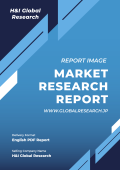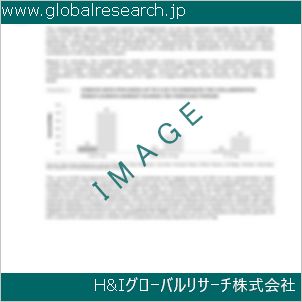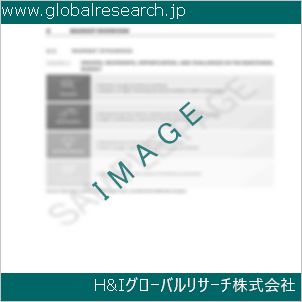1. Preface
1.1. Market Definition and Scope
1.2. Market Segmentation
1.3. Key Research Objectives
1.4. Research Highlights
2. Assumptions and Research Methodology
3. Executive Summary: Global Sterile Injectable Drugs Market
4. Market Overview
4.1. Introduction
4.1.1. Type Definition
4.1.2. Industry Evolution / Developments
4.2. Overview
4.3. Market Dynamics
4.3.1. Drivers
4.3.2. Restraints
4.3.3. Opportunities
4.4. Global Sterile Injectable Drugs Market Analysis and Forecast, 2017-2031
5. Key Insights
5.1. Pipeline Analysis
5.2. Key Type/Brand Analysis
5.3. Key Mergers & Acquisitions
5.4. COVID-19 Pandemic Impact on Industry
6. Global Sterile Injectable Drugs Market Analysis and Forecast, by Type
6.1. Introduction and Definitions
6.2. Key Findings/Developments
6.3. Market Value Forecast, by Type, 2017–2031
6.3.1. Small Molecule
6.3.2. Large Molecule
6.4. Market Attractiveness, by Type
7. Global Sterile Injectable Drugs Market Analysis and Forecast, by Drug Class
7.1. Introduction and Definitions
7.2. Key Findings/Developments
7.3. Market Value Forecast, by Drug Class, 2017–2031
7.3.1. Monoclonal Antibodies (Mabs)
7.3.2. Cytokines
7.3.3. Insulin
7.3.4. Peptide Hormones
7.3.5. Vaccine
7.3.6. Immunoglobulins
7.3.7. Blood Factors
7.3.8. Peptide Antibiotics
7.3.9. Others
7.4. Market Attractiveness, by Drug Class
8. Global Sterile Injectable Drugs Market Analysis and Forecast, by Indication
8.1. Introduction and Definitions
8.2. Key Findings/Developments
8.3. Market Value Forecast, by Indication, 2017–2031
8.3.1. Cardiology & Metabolic Disorders
8.3.2. Neurology
8.3.3. Oncology
8.3.4. Autoimmune
8.3.5. Gastroenterology
8.3.6. Hematology
8.3.7. Pain
8.3.8. Infectious Disease
8.3.9. Others
8.4. Market Attractiveness, by Indication
9. Global Sterile Injectable Drugs Market Analysis and Forecast, by Distribution Channel
9.1. Introduction and Definitions
9.2. Key Findings/Developments
9.3. Market Value Forecast, by Distribution Channel, 2017–2031
9.3.1. Hospital Pharmacy
9.3.2. Retail Pharmacy
9.3.3. E-commerce
9.4. Market Attractiveness, by Distribution Channel
10. Global Sterile Injectable Drugs Market Analysis and Forecast, by Region
10.1. Key Findings
10.2. Market Value Forecast, by Region, 2017–2031
10.2.1. North America
10.2.2. Europe
10.2.3. Asia Pacific
10.2.4. Latin America
10.2.5. Middle East & Africa
10.3. Market Attractiveness, by Region
11. North America Sterile Injectable Drugs Market Analysis and Forecast
11.1. Introduction
11.1.1. Key Findings
11.2. Market Value Forecast, by Type, 2017–2031
11.2.1. Small Molecule
11.2.2. Large Molecule
11.3. Market Attractiveness, by Type
11.4. Market Value Forecast, by Drug Class, 2017–2031
11.4.1. Monoclonal Antibodies (Mabs)
11.4.2. Cytokines
11.4.3. Insulin
11.4.4. Peptide Hormones
11.4.5. Vaccine
11.4.6. Immunoglobulins
11.4.7. Blood Factors
11.4.8. Peptide Antibiotics
11.4.9. Others
11.5. Market Attractiveness, by Drug Class
11.6. Market Value Forecast, by Indication, 2017–2031
11.6.1. Cardiology & Metabolic Disorders
11.6.2. Neurology
11.6.3. Oncology
11.6.4. Autoimmune
11.6.5. Gastroenterology
11.6.6. Hematology
11.6.7. Pain
11.6.8. Infectious Disease
11.6.9. Others
11.7. Market Attractiveness, by Indication
11.8. Market Value Forecast, by Distribution Channel, 2017–2031
11.8.1. Hospital Pharmacy
11.8.2. Retail Pharmacy
11.8.3. E-commerce
11.9. Market Attractiveness, by Distribution Channel
11.10. Market Value Forecast, by Country/Sub-region, 2017–2031
11.10.1. U.S.
11.10.2. Canada
11.11. Market Attractiveness Analysis
11.11.1. By Type
11.11.2. By Drug Class
11.11.3. By Indication
11.11.4. By Distribution Channel
11.11.5. By Country
12. Europe Sterile Injectable Drugs Market Analysis and Forecast
12.1. Introduction
12.1.1. Key Findings
12.2. Market Value Forecast, by Type, 2017–2031
12.2.1. Small Molecule
12.2.2. Large Molecule
12.3. Market Attractiveness, by Type
12.4. Market Value Forecast, by Drug Class, 2017–2031
12.4.1. Monoclonal Antibodies (Mabs)
12.4.2. Cytokines
12.4.3. Insulin
12.4.4. Peptide Hormones
12.4.5. Vaccine
12.4.6. Immunoglobulins
12.4.7. Blood Factors
12.4.8. Peptide Antibiotics
12.4.9. Others
12.5. Market Attractiveness, by Drug Class
12.6. Market Value Forecast, by Indication, 2017–2031
12.6.1. Cardiology & Metabolic Disorders
12.6.2. Neurology
12.6.3. Oncology
12.6.4. Autoimmune
12.6.5. Gastroenterology
12.6.6. Hematology
12.6.7. Pain
12.6.8. Infectious Disease
12.6.9. Others
12.7. Market Attractiveness, by Indication
12.8. Market Value Forecast, by Distribution Channel, 2017–2031
12.8.1. Hospital Pharmacy
12.8.2. Retail Pharmacy
12.8.3. E-commerce
12.9. Market Attractiveness, by Distribution Channel
12.10. Market Value Forecast, by Country/Sub-region, 2017–2031
12.10.1. Germany
12.10.2. U.K.
12.10.3. France
12.10.4. Italy
12.10.5. Spain
12.10.6. Rest of Europe
12.11. Market Attractiveness Analysis
12.11.1. By Type
12.11.2. By Drug Class
12.11.3. By Indication
12.11.4. By Distribution Channel
12.11.5. By Country/Sub-region
13. Asia Pacific Sterile Injectable Drugs Market Analysis and Forecast
13.1. Introduction
13.1.1. Key Findings
13.2. Market Value Forecast, by Type, 2017–2031
13.2.1. Small Molecule
13.2.2. Large Molecule
13.3. Market Attractiveness, by Type
13.4. Market Value Forecast, by Drug Class, 2017–2031
13.4.1. Monoclonal Antibodies (Mabs)
13.4.2. Cytokines
13.4.3. Insulin
13.4.4. Peptide Hormones
13.4.5. Vaccine
13.4.6. Immunoglobulins
13.4.7. Blood Factors
13.4.8. Peptide Antibiotics
13.4.9. Others
13.5. Market Attractiveness, by Drug Class
13.6. Market Value Forecast, by Indication, 2017–2031
13.6.1. Cardiology & Metabolic Disorders
13.6.2. Neurology
13.6.3. Oncology
13.6.4. Autoimmune
13.6.5. Gastroenterology
13.6.6. Hematology
13.6.7. Pain
13.6.8. Infectious Disease
13.6.9. Others
13.7. Market Attractiveness, by Indication
13.8. Market Value Forecast, by Distribution Channel, 2017–2031
13.8.1. Hospital Pharmacy
13.8.2. Retail Pharmacy
13.8.3. E-commerce
13.9. Market Attractiveness, by Distribution Channel
13.10. Market Value Forecast, by Country/Sub-region, 2017–2031
13.10.1. China
13.10.2. Japan
13.10.3. India
13.10.4. Australia & New Zealand
13.10.5. Rest of Asia Pacific
13.11. Market Attractiveness Analysis
13.11.1. By Type
13.11.2. By Drug Class
13.11.3. By Indication
13.11.4. By Distribution Channel
13.11.5. By Country/Sub-region
14. Latin America Sterile Injectable Drugs Market Analysis and Forecast
14.1. Introduction
14.1.1. Key Findings
14.2. Market Value Forecast, by Type, 2017–2031
14.2.1. Small Molecule
14.2.2. Large Molecule
14.3. Market Attractiveness, by Type
14.4. Market Value Forecast, by Drug Class, 2017–2031
14.4.1. Monoclonal Antibodies (Mabs)
14.4.2. Cytokines
14.4.3. Insulin
14.4.4. Peptide Hormones
14.4.5. Vaccine
14.4.6. Immunoglobulins
14.4.7. Blood Factors
14.4.8. Peptide Antibiotics
14.4.9. Others
14.5. Market Attractiveness, by Drug Class
14.6. Market Value Forecast, by Indication, 2017–2031
14.6.1. Cardiology & Metabolic Disorders
14.6.2. Neurology
14.6.3. Oncology
14.6.4. Autoimmune
14.6.5. Gastroenterology
14.6.6. Hematology
14.6.7. Pain
14.6.8. Infectious Disease
14.6.9. Others
14.7. Market Attractiveness, by Indication
14.8. Market Value Forecast, by Distribution Channel, 2017–2031
14.8.1. Hospital Pharmacy
14.8.2. Retail Pharmacy
14.8.3. E-commerce
14.9. Market Attractiveness, by Distribution Channel
14.10. Market Value Forecast, by Country/Sub-region, 2017–2031
14.10.1. Brazil
14.10.2. Mexico
14.10.3. Rest of Latin America
14.11. Market Attractiveness Analysis
14.11.1. By Type
14.11.2. By Drug Class
14.11.3. By Indication
14.11.4. By Distribution Channel
14.11.5. By Country/Sub-region
15. Middle East & Africa Sterile Injectable Drugs Market ;Analysis and Forecast
15.1. Introduction
15.1.1. Key Findings
15.2. Market Value Forecast, by Type, 2017–2031
15.2.1. Small Molecule
15.2.2. Large Molecule
15.3. Market Attractiveness, by Type
15.4. Market Value Forecast, by Drug Class, 2017–2031
15.4.1. Monoclonal Antibodies (Mabs)
15.4.2. Cytokines
15.4.3. Insulin
15.4.4. Peptide Hormones
15.4.5. Vaccine
15.4.6. Immunoglobulins
15.4.7. Blood Factors
15.4.8. Peptide Antibiotics
15.4.9. Others
15.5. Market Attractiveness, by Drug Class
15.6. Market Value Forecast, by Indication, 2017–2031
15.6.1. Cardiology & Metabolic Disorders
15.6.2. Neurology
15.6.3. Oncology
15.6.4. Autoimmune
15.6.5. Gastroenterology
15.6.6. Hematology
15.6.7. Pain
15.6.8. Infectious Disease
15.6.9. Others
15.7. Market Attractiveness, by Indication
15.8. Market Value Forecast, by Distribution Channel, 2017–2031
15.8.1. Hospital Pharmacy
15.8.2. Retail Pharmacy
15.8.3. E-commerce
15.9. Market Attractiveness, by Distribution Channel
15.10. Market Value Forecast, by Country/Sub-region, 2017–2031
15.10.1. GCC Countries
15.10.2. South Africa
15.10.3. Rest of Middle East & Africa
15.11. Market Attractiveness Analysis
15.11.1. By Type
15.11.2. By Drug Class
15.11.3. By Indication
15.11.4. By Distribution Channel
15.11.5. By Country/Sub-region
16. Competition Landscape
16.1. Market Player – Competition Matrix (By Tier and Size of Companies)
16.2. Market Share Analysis, by Company (2022)
16.3. Company Profiles
16.3.1. Baxter International
16.3.1.1. Company Overview (HQ, Business Segments, Employee Strength)
16.3.1.2. Type Portfolio
16.3.1.3. Financial Overview
16.3.1.4. SWOT Analysis
16.3.1.5. Strategic Overview
16.3.2. Sanofi S.A
16.3.2.1. Company Overview (HQ, Business Segments, Employee Strength)
16.3.2.2. Type Portfolio
16.3.2.3. Financial Overview
16.3.2.4. SWOT Analysis
16.3.2.5. Strategic Overview
16.3.3. Pfizer, Inc.
16.3.3.1. Company Overview (HQ, Business Segments, Employee Strength)
16.3.3.2. Type Portfolio
16.3.3.3. Financial Overview
16.3.3.4. SWOT Analysis
16.3.3.5. Strategic Overview
16.3.4. GlaxoSmithKline Plc.
16.3.4.1. Company Overview (HQ, Business Segments, Employee Strength)
16.3.4.2. Type Portfolio
16.3.4.3. Financial Overview
16.3.4.4. SWOT Analysis
16.3.4.5. Strategic Overview
16.3.5. AstraZeneca
16.3.5.1. Company Overview (HQ, Business Segments, Employee Strength)
16.3.5.2. Type Portfolio
16.3.5.3. Financial Overview
16.3.5.4. SWOT Analysis
16.3.5.5. Strategic Overview
16.3.6. Merck & Co., Inc.
16.3.6.1. Company Overview (HQ, Business Segments, Employee Strength)
16.3.6.2. Type Portfolio
16.3.6.3. Financial Overview
16.3.6.4. SWOT Analysis
16.3.6.5. Strategic Overview
16.3.7. Novartis AG
16.3.7.1. Company Overview (HQ, Business Segments, Employee Strength)
16.3.7.2. Type Portfolio
16.3.7.3. Financial Overview
16.3.7.4. SWOT Analysis
16.3.7.5. Strategic Overview
16.3.8. Johnson & Johnson Services, Inc.
16.3.8.1. Company Overview (HQ, Business Segments, Employee Strength)
16.3.8.2. Type Portfolio
16.3.8.3. Financial Overview
16.3.8.4. SWOT Analysis
16.3.8.5. Strategic Overview
16.3.9. Novo Nordisk A/S
16.3.9.1. Company Overview (HQ, Business Segments, Employee Strength)
16.3.9.2. Type Portfolio
16.3.9.3. Financial Overview
16.3.9.4. SWOT Analysis
16.3.9.5. Strategic Overview
16.3.10. Gilead Sciences, Inc.
16.3.10.1. Company Overview (HQ, Business Segments, Employee Strength)
16.3.10.2. Type Portfolio
16.3.10.3. Financial Overview
16.3.10.4. SWOT Analysis
16.3.10.5. Strategic Overview
❖ 免責事項 ❖
http://www.globalresearch.jp/disclaimer












